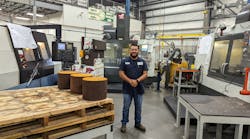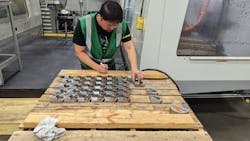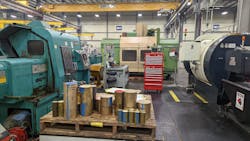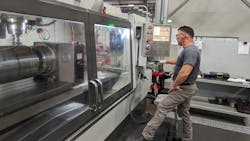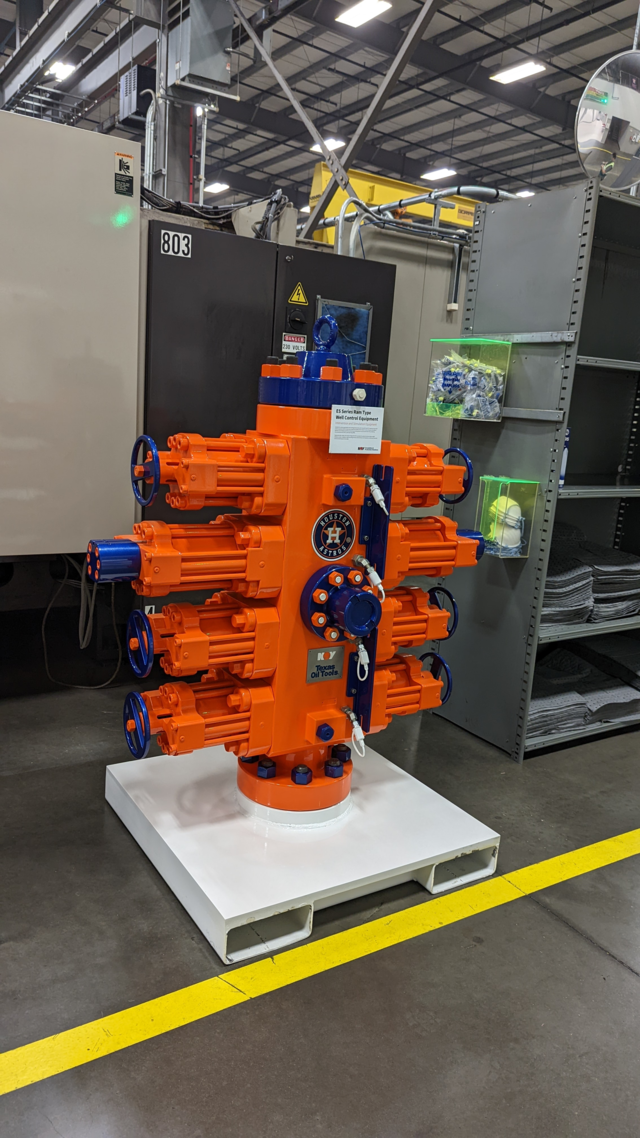IW Best Plants Winner Texas Oil Tools: Manufacturing Excellence on a Budget
With plenty of money and consultants analyzing every operation, boosting factory efficiency sounds easy. But, that kind of spending isn’t always an option, especially for small- and medium-sized manufacturers. So, what can you get for a few thousand dollars and a workforce committed to continuous improvement?
How about these three-year results:
- Workplace injuries eliminated
- Double-digit improvements in on-time delivery
- Halving already low scrap rates
- Reducing inventory levels by $17.5 million
The spend for NOV Texas Oil Tools, a 130-person machine shop, to achieve those gains? A few equipment upgrades, about $5,000 for TV screens to share production data throughout the plant, a workforce committed to continuous improvement.
“We empower a lot of people around here to get things done,” says plant manager Brandon Davis in Conroe, Texas, about an hour north of Houston. Listening and collaborating, not new equipment or outside experts, were key to decimating waste and inefficiency.
Without a massive budget at its disposal, Texas Oil Tools made the grade holistically—rededicating itself to safety, cost reductions, quality improvements and operational efficiency in virtually every department.
The big thing that had been standing in the way of improvements was time. Rearranging a machine shop to improve workflows is nearly impossible when orders are flowing. Oil prices plummeted at the onset of the COVID-19 pandemic, and Texas Oil Tools’ orders disappeared. Painfully deep layoffs followed, but the crisis provided the opportunity to reconfigure the shop floor for increased productivity, improve warehousing operations to lower inventory costs and engage employees to improve safety.
Embracing Cells
In 2020, Texas Oil Tools used a traditional machine shop layout—lathes next to lathes, mills next to mills, one operator per machine. CNC machinist “Super” Mario Perla says the process inflated work in progress.
“You’d have parts that needing milling and lathe work,” Perla says. Lathe operators would batch dozens of parts together, then they would often sit for days until mill operators were ready for them.
Grouping equipment by product instead of process eliminated that problem. Multi-machine cells, typically two mills and one lathe, are arranged in a horseshoe pattern around one person who can operate all three. Rather than turning 50 pieces on a lathe, letting them sit for a week, then milling features, one machinist turns the initial piece on the lathe, moves the semi-finished part to the first mill for one set of operations, then moves it to the second mill for more metal cutting.
The continuous flow allows one machinist to finish components without waiting for parts from another line. Eliminating waiting times boosted on-time delivery by 20 percentage points throughout three years.
Texas Oil Tools had experimented with cells pre-pandemic with one three-machine operation. With the floor mostly idle in 2020, crews rearranged equipment to create 11 more cells. No investments in automation, no expensive new equipment, no complex pallet systems. Just forklifts to move decades-old CNC machines and teamwork to optimize layouts.
People Drive Success
While the lack of work resulting from plunging oil prices allowed process improvements, the sting of layoffs forced remaining employees to question the future. Davis says workers needed some wins to boost morale.
To hear more from Sandvik Coromant and other IW Best Plants winners, attend the Manufacturing & Technology Show from Oct. 18-20 in Cleveland. All four winner's of this year's awards will participate in a panel discussion on Oct. 19 to discuss how they approach continuous improvement and strive toward manufacturing excellence.
The facility’s pre-pandemic safety record of roughly one accident per year already was better than industry average, but that number can always improve. So, Texas Oil Tools created an employee committee that collects suggestions and concerns from co-workers and studies ways to address those.
Gurmeet Setia, a CNC machinist and founding member of the safety committee, says machinists, warehouse workers and quality testers offered more than 80 ideas for improvements—some as simple as painting stripes around high-traffic areas, others that required upgrading components on machines to improve guarding.
“We just listened to everyone’s ideas and picked the projects that sounded like they had the most potential,” Setia says.
In August 2022, the plant was 1,059 days accident free.
Davis says putting employees in charge of the safety committee encouraged people in harm’s way to find better ways of doing everything.
“Excellence in safety has other benefits. The attention to detail that you need to get to zero accidents leads to lower scrap and lower waste overall,” Davis says.
Focus on Results
That comment sums up Davis’ mixed approach of empowering people and tracking classic continuous improvement metrics. He can point to individual employee contributions to statistical improvements and evaluation metrics that changed workers’ attitudes.
Some gains were top-down from management. Texas Oil Tools developed better statistical tools to improve demand planning, allowing that $17.5 million inventory reduction. Warehouse changes placed stringent targets for positional accuracy of every tool, workpiece and block of material.
Others gains involved trusting people and getting out of their way. Management removed time limits on setting up certain machining operations, trusting employees to do the job right and not waste company time. Scrap and rework costs fell 52% from already low levels, and setup times didn’t change significantly.
That constant embrace of people, teamwork and culture—well, this is Texas, so it all comes down to barbecue eventually. Several times throughout the year, teams compete against each other for the best smoked brisket and beef ribs, friendly contests that lead to everyone getting fed. It might sound a little corny, but Davis calls sharing meals a Texas Oil Tools best practice.
“You’ll have engineers and salespeople sitting down with machinists and testing people,” Davis says. “When people talk to each other across department lines like that, that’s when you get the best ideas.”
